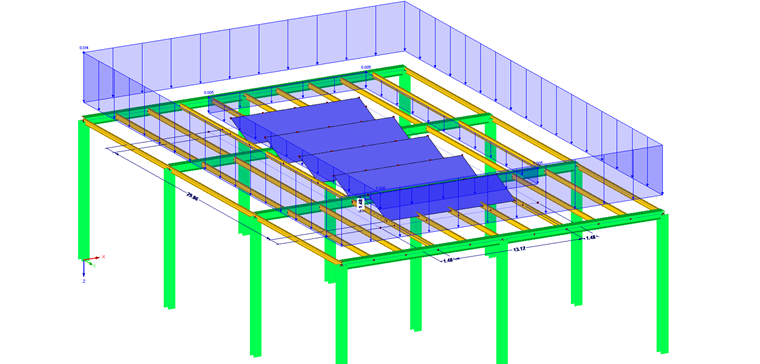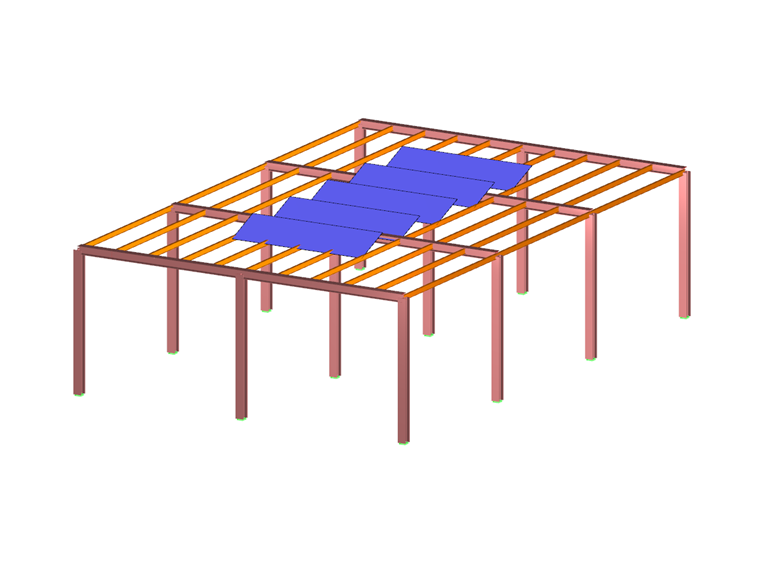The standard refers to solar thermal and photovoltaic systems arranged in a row for roof inclinations up to 10°.
The following shape coefficient may be assumed for structures with a maximum height of 0.5 m.
This means that if the result from γ ⋅ (h/sk) is smaller than μ1 or μ2, μ5 corresponds at least to the magnitude of μ1 or μ2. This is usually the case of relatively flat structures. However, if the result of γ ⋅ (h/sk) is greater than 1.0, a value of 1.0 is to be applied for μ5.
For structural systems with a height of more than 0.5 m, the shape coefficient is increased by 10%. The weight of the snow is assumed to be γ = 2 kN/m³.
In the case of an accidental action (North German Plain), the following assumption applies.
The drift length ls determines the area in which the increased load must be taken into account. You have to consider it for the dimensions of the coverable area in length and width, and it is composed as follows.
ls = l1 + 2 ⋅ h
Consideration in RFEM and RSTAB
In RFEM and RSTAB, the easiest way to apply the resulting snow load is to use the load generator for snow loads. Additionally, the area in which the increased load is to be taken into account must be determined using the drift length formula. The missing load in the area of the elevated solar thermal and photovoltaic systems can be supplemented, for example, with the "Member Loads from Area Loads via Plane" load generator.


